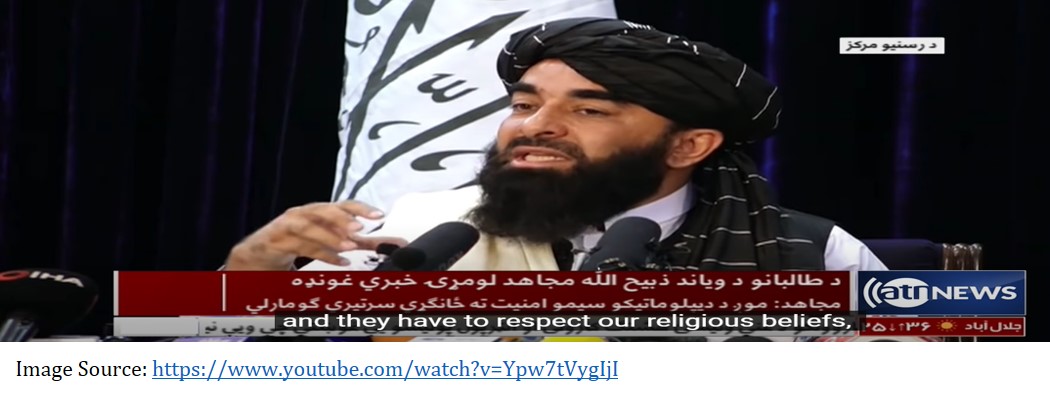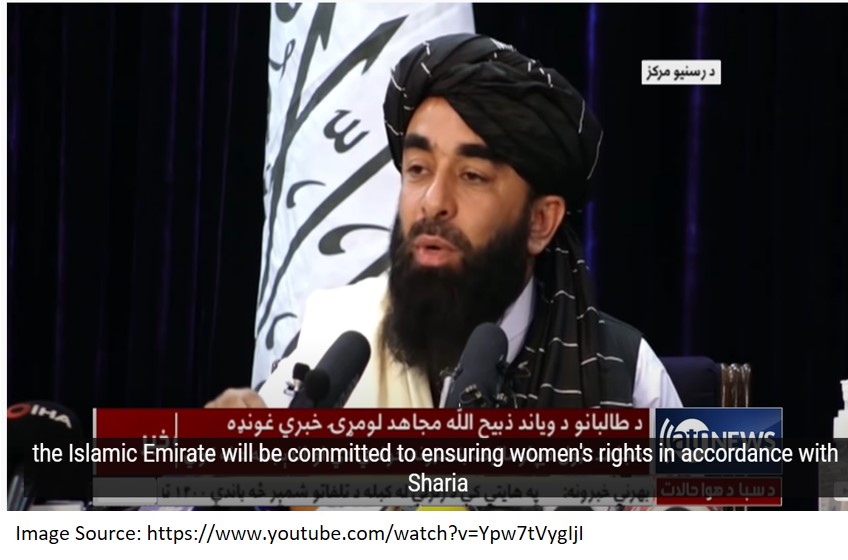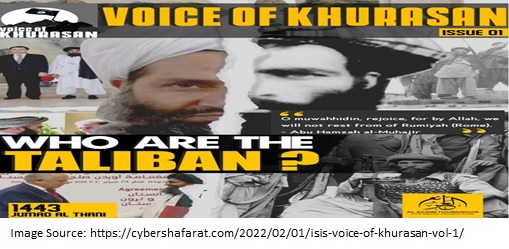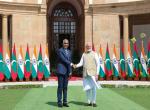The impact of the Taliban’s one-year rule in Afghanistan differs across regions and countries. The impression on South Asia was more distinct than on any other region. In South Asia, Pakistan and Afghanistan bore the burden of the Taliban’s takeover in the form of rising militant violence in the border regions, victorious jihadist narratives, cross-border flow of refugees, struggling economies and human rights violations. The extremist narratives increased rampantly around the South Asian region. However, India has so far largely managed to ensure countering of the radical ideologies from seaping into the social fabric. Nevertheless, India continues to face threat from Pakistan based terror groups.
The Taliban’s return to power in Afghanistan has turned out to be a liablity rather than an assest. If one has to give an overview of one year of Taliban rule in Afghanistan it will be described as a country divided between pro- Taliban and anti-Taliban factions, battered economy, rampant human rights violations, a compromised health system, destitute citizens, dejected youth, wide spread hunger, and women in constant fear. Overall on the index of Human Development, Afghanistan is in abyss. Yet, the Taliban and its supporters have a lot to celeberate.
Taliban spokesperson Zabiullah Mujahid on the first day of the press conference on August 17th 2021, made it clear to the world that their religious beliefs are above all and must be respected.

Taliban’s ‘mis-interpreted’ Islamic laws have been reimposed on the society which victimises the young girls and women of Afghanistan. Women have been an important subject of discussion for the world, and Taliban have ordained that women will have to live in accordance with Sharia. As a result, the young girls above the age of 15 years were barred from going to schools, and several women have lost their jobs as sharia based laws are applied on the women of Afghanistan; women are covered in blue burqa from head to toe. The most totemic of all the pledges was that women will be allowed to study and work however, all these decisions were withdrawn abrubtly.

Triumphant Narrative for Jihadists
Moreover, Taliban takeover of Kabul has created a glorious jihadist narrative for the terror groups. Tehreek-e-Taliban Pakistan (TTP) has rejuventaed itself while Al Qaeda still has close ties with the Taliban, to be able to move freely in and out of Afghanistan. Similarly, Islamic State of Khorasan (IS-K) continues to be resilient and rebellious in carrying out attacks inside Afghanistan and attcking the Taliban for being an un-islamic and west influenced. The TTP has reinvigorated and increased frequency of its attacks against Pakistan[1] and pledged its allegiance to the Taliban Emir Akhundzada and decided to enforce sharia in Pakistan. TTP has also absorbed seventeen militant factions which included splinter groups of Lashkar-e-Jhangivi (LeJ), and Al Qaeda in the Indian Sub-continent (AQIS) with approximate 5000-7000 TTP fighters in and around Afghanistan-Pakistan border.[2]
Meanwhile, IS-K has continued to carry out high profile attacks in Afghanistan, thus undermining the Taliban’s efforts to gain any sort of recognition from the international bodies. IS-K has elivated its media propaganda in number of languages incluidng Hindi and Malyalam[3] targeting India as well and criticising the Taliban in the same breath as being friends of apostates because Taliban chose not to comment on any sort of soverign matters related to India or China.[4]

The resistance put out by the Taliban has been a source of inspiration for several terror groups like in Boko Haram, Al Shabab, Jammat-i-Islami Bangladesh; Jammah Ansharu Syariah has described Talibans vicotry as exemplary[5] and similarly Jemmah Islamiyah (JI) viwed the Taliban rule as a source of enhanced recrutiments for JI to pursue Islamic activities.[6] The extremist groups feel empowered and it strengthens their belief that religious goals are achieveable if one is determined and persistent in their armed struggle.
However, Taliban seems to be divided ethnically and factionally over power sharing and faces challenges from the National Resistance Front (NRF) in northern Afghanistan.
Division with in the Taliban
There are two broad centers of power within the Taliban structure of governance. One is a political headquarter which has its office in Kabul whereas, the other one is an ideological headquarter which is in Kandahar.[7] And at the helm of affairs is the Emir Haibatullah Akhundzada and his team which can veto any decision taken by either of the headquarters.[8] The decision of opening the schools was taken by the political desk which was later vetoed by Haibatullah after discussion with the ideological desk, is one such example.[9] Another such example is conflict over the inclusive government and power sharing between former president Karzai and his team and the Taliban with the ratio of 30:70 respectively. However, it couldn’t be concluded due to tussle between the Haqqani and Baradar.[10] There is a rift between the Haqqani Network and Kandhar (ideological desk) of the Taliban. Kandhar faction has been opposing the decision over giving the most significant Interior Ministry and Migration and Tribal Affairs to the Haqqani’s, blaming that due to over whelming presence of Haqqani Network in Taliban cabinet the Islamic Emirate of Afghanistan is not getting international recognition.[11] While the Haqqani believe that most of the government jobs have been taken over by the Kandhari faction.[12]
The latest cause of conflict between the two factions is the killing of Ayman Al Zawahiri who was residing in the safe house owned by the family of Sirajuddin Haqqani. The drone attack on the Al Qaeda chief came at the time when TTP and Pakistan government officials were negotiating peace faciliated by the Haqqani faction of the Taliban government.[13]
Apart from struggle for power sharing, there exists an omnipresent ethnic division within the ranks of the Taliban. Taliban is a Pashtun dominated jihadist group which now has significant numbers of Uzbeks and Tajiks as well as few members from the Khwaja, Hazara, Turkmen and Nooristani community.[14] However, over a period of time there has been conflict amongst the members over issues like coal mining rights in Balkhab district[15], while some are blamed for supporting IS-K in Faryab province.[16] Moreover, the Uzbek Taliban demands control over Uzbek dominated regions like Jawzjan, Sar-i-Pul and Faryab.[17]
Conclusion: Beyond Afghanistan-Pakistan
One year after the Taliban took control of Afghanistan, South Asia faces a variety of threats, with terrorist activity gaining some foothold in Muslim-majority nations like Pakistan and Bangladesh. Since it began in April 2021, a wave of pro-Taliban and pro-AQ messages on social media by Bangladeshi extremist groups and individuals actually predated the Taliban's return in August 2021. The rise of the Taliban was viewed by many radicals and extremists as the liberation from "foreign occupation." Some of these followers have openly stated their aim to turn Bangladesh into an Islamic Emirate under Sharia law. Although the Taliban's re-election in Afghanistan has increased the calls for Sharia rule, it is not a new demand. If violent activity increases while the Taliban are in power, it can provide an enhanced motivation for militant organisations in Bangladesh. Currently, the Dawlatul Islam Bengal (ISB) or Neo-JMB support the so-called Islamic State (IS) philosophy, while the Jama'atul Mujahideen Bangladesh (JMB), Ansar al Islam (AAI), and Harkat ul Jihad al Islami (HuJI-B) are linked to the AQ ideology.[18]
Extremist activity by jihadist groups have had limited or rather negligible impact in the Maldives despite the lack of concrete proof that the Taliban takeover had a significant impact there. The influence of the Taliban's takeover on the nations with non-Muslim majorities like India and Sri Lanka appears to be minimal. This could be due to the vigilant intelligence and security agencies, however, the drug trafficking is a matter of concern for these countries. Security agencies should however, continue to keep a careful eye on early signals of the resurgence of the AQ network across the region and its context-specific peculiarities because one year is insufficient for the regional impact of the Taliban takeover in Afghanistan to fully appear.
Endnotes :
[1]Zia ur Rehman, “One Year Later, Pakistan’s Taliban Rule Hopes Put in Check”, August 10, 2022, VOA News, https://www.voanews.com/a/one-year-later-pakistan-s-taliban-rule-hopes-put-in-check-/6696183.html
[2] Anwar Iqbal, “TTP still active with up to 5,000 fighters: UN,” Dawn, February 9, 2022, https://www.dawn.com/news/1674089.
[3]Ricardo Valle, “Islamic State in Khorasan Province Counters Taliban with Formidable Media and Propaganda Offensive,” Terrorism Monitor, December 6, 2021, https://jamestown.org/program/islamic-state-in-khorasanprovince-counters-taliban-with-formidable-media-and-propaganda-offensive/
[4]Kunal Gurav, “Islamic State's video on Nupur Sharma, Taliban threatens attack on Hindus,” Hindustan Times, June 16, 2022, https://www.hindustantimes.com/india-news/islamic-state-s-video-on-nupur-sharma-talibanthreatens-attack-on-hindus-101655353764244.html
[5]Subei Rai Bhandari,”Taliban Takeover Brings Cheers, Fears to SE Asia and Bangladesh”, Benar News, 19 August 2021, https://www.benarnews.org/english/news/indonesian/taliban-militancy-regional-security-08192021180223.html
[6] “Zeina Karam, “Taliban Success in Afghanistan seen as Boost for Extremists”, August 28, 2021, AP News, https://apnews.com/article/middle-east-africa-afghanistan-taliban-islamic-state-group-8b54562a8676906d497952c9e3f0cfda
[7]Staff Desk, “Internal Conflicts Aggravate within the Talibna”, December 23, 2021, Regional Anti-Terrorist Structure of Shanghai Cooperation Organistaion, https://ecrats.org/en/2021/12/23/internal-conflicts-aggravate-within-the-taliban/#
[8]Fazelminallah Qazizai, “For Now, Ideology Trumps Pragmatism in Afghanistan,” Newline, July 13, 2022, https://newlinesmag.com/newsletter/for-now-ideology-trumps-pragmatism-in-afghanistan/.
[9] “Taliban are divided on girls’ education, says former Afghan MP,” Deutsche Welle, March 24, 2022, https://www.dw.com/en/taliban-are-divided-on-girls-education-says-former-afghan-mp/av-61249438.
[10] “Afghanistan: Mullah Baradar promises ‘inclusive’ government,” Al-Jazeera, September 4, 2021, https://www.aljazeera.com/news/2021/9/4/afghanistan-mullah-baradar-promises-an-inclusive-government.
[11]BBC news Desk, “Hardliners get Key posts in New Taliban Government”, September 7, 2021, BBC News, https://www.bbc.com/news/world-asia-58479750
[12]Ibid.
[13]Zahid Hussain, “Making Pecae with Militants”, November 10, 2021, Dawn, https://www.dawn.com/news/1657059
[14]Radio Azadi, “Taliban Expands Afghan Cabinet List but again Fails to include Women”, 21 September 2021, Gandhara, https://gandhara.rferl.org/a/taliban-cabinet-excludes-women/31470737.html
[15]Stefanie Gilinski, “Taliban Wage War Over Coal in Northern Afghanistan,” Foreign Policy, July 5, 2022, https://foreignpolicy.com/2022/07/05/taliban-afghanistan-coal-mining-resources-economy/.
[16]Najibullah Lalozy, Taliban commander arrested, hundreds took to street in Faryab province to demand his release,” Khama Press, January 13, 2022, https://www.khaama.com/taliban-commander-arrested-hundreds-tookto-street-in-faryab-province-to-demand-his-release-8768767/
[17]Sudarsan Raghavan, “A popular Uzbek commander fought for the Taliban for more than two decades. He was arrested anyway”, The Washington Post, February 1, 2022, https://www.washingtonpost.com/world/2022/02/01/taliban-uzbek-afghanistan/
[18]Staff Correspondant, “CTTC arrests first female member of Ansar al-Islam in Bangladesh,” The Daily Star, August 30, 2021, https://www.thedailystar.net/news/bangladesh/crime-justice/news/cttc-arrests-first-female-ansar-al-islam-operative-2164116
(The paper is the author’s individual scholastic articulation. The author certifies that the article/paper is original in content, unpublished and it has not been submitted for publication/web upload elsewhere, and that the facts and figures quoted are duly referenced, as needed, and are believed to be correct). (The paper does not necessarily represent the organisational stance... More >>
Image Source: https://www.cbsnews.com/pictures/afghanistan-taliban-victory-day-us-withdrawal/











Post new comment